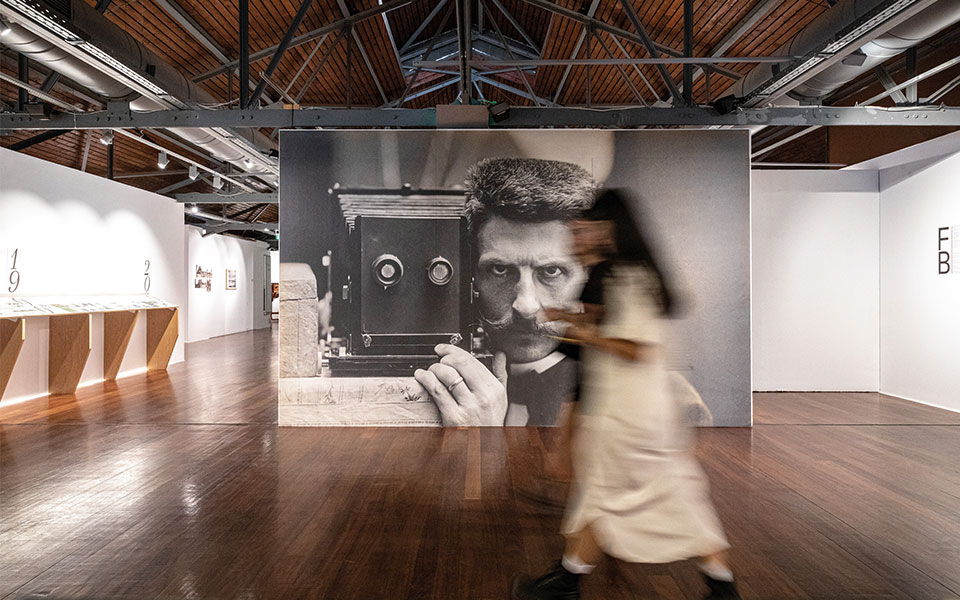Contemporary art may not be Thessaloniki᾽s main attraction, but the city’s collection of such works is undoubtedly something that can make any visit to the city more compelling. With this in mind, I head to the outdoor sculpture gallery of the Museum of Contemporary Art, located on the premises of the Thessaloniki International Fair, which – as a side note – is one of the focal points of a redevelopment project that will change the face of the city.
This small park, featuring works by Greek and international artists, is an ideal spot for quiet contemplation. One᾽s gaze is immediately drawn to a version of the celebrated piece “Umbrellas” by versatile artist George Zongolopoulos, a leading representative of the Greek art movement known as the ᾽30s Generation. Parts of the sculpture sway gently as a fine stream of water flows through thin pipes installed between them. Αll around this imposing installation are the abstract “bushes” that internationally renowned sculptor Philolaos Tloupas (1923-2010) made using cement and gravel. The setting is complemented by various works in dialogue with one another, including the impressive concrete and marble “L’un contient l’ autre” (“One contains the other”) by French sculptor Marc Charpin (1935-2014). Directly across the street stand two compositions by the Greek sculptor Alex Mylona (1920-2016), entitled “LOVE” and “JUSTICE.”
As is often the case in Greek institutions, there᾽s a story behind the 1994 founding of the museum that essentially set the stage for contemporary art appreciation in Thessaloniki. It begins with an earthquake – the first severe earthquake to strike a modern Greek city, measuring 6.5 on the Richter scale and occurring on June 20th, 1978, causing 49 deaths and leaving much of the city᾽s infrastructure, including its cultural venues, in shambles.
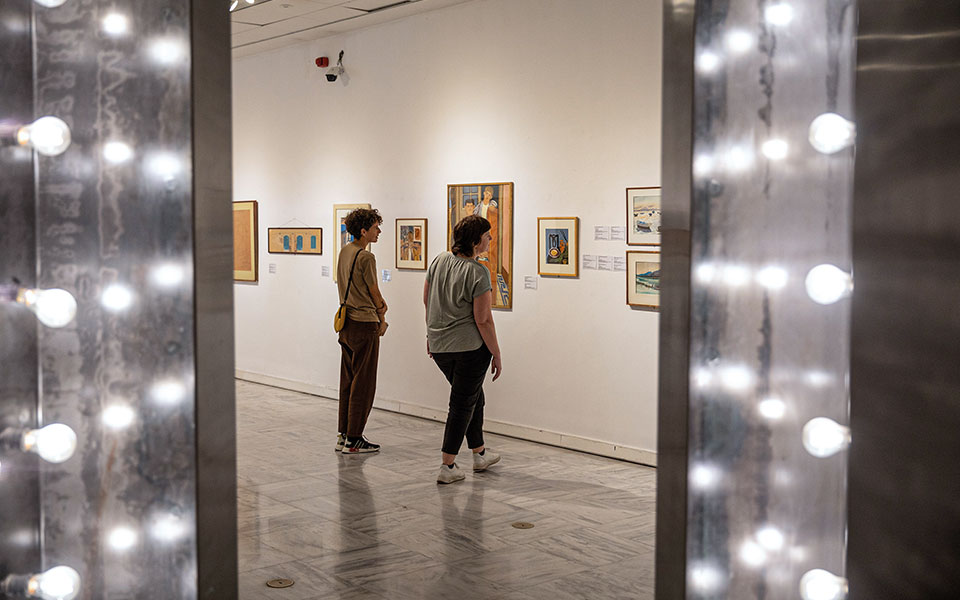
© Konstantinos Tsakalidis
Alexander Iolas, one of the world᾽s most prominent art collectors at the time, was moved by the tragedy unfolding in a city that reminded him of his hometown of Alexandria. He decided to take action by helping to create a center for contemporary art in Thessaloniki. Discussions with Maro Lagia, a prominent gallerist at the time, resulted in Iolas donating 47 artworks to the Macedonian Centre for Contemporary Art, which was established to accommodate his impressive collection. No one could have known then that it would take 21 years for Iolas᾽ vision to be realized and for his art collection to go on permanent display in a wing of the MOMus – Museum of Contemporary Art, breathing new life into the city᾽s cultural scene (unfortunately, by this time, Iolas had passed away).
Three years after the museum opened, Thessaloniki was named the 1997 Cultural Capital of Europe in a year that saw the opening of three more cultural institutions – namely the State Museum of Contemporary Art, the Thessaloniki Museum of Photography, and the Contemporary Art Centre of Thessaloniki. In 2018, these three venues, along with the Museum Alex Mylona in Athens and the Museum of Contemporary Art, united under the single name of Metropolitan Organisation of Museums of Visual Arts of Thessaloniki (MOMus).
With its splendid permanent collections, temporary exhibitions, and creative workshops, MOMus has become a vibrant cultural hub for Thessaloniki. Its venues form a triangle on the city map, one that connects the waterfront to the Lazarist Monastery in the north and the site of the Thessaloniki International Fair in the east. All these venues are worth exploring, as they offer visitors the chance to see everything from historical photographs and documentary screenings to avant-garde paintings and contemporary works that address topical social issues.
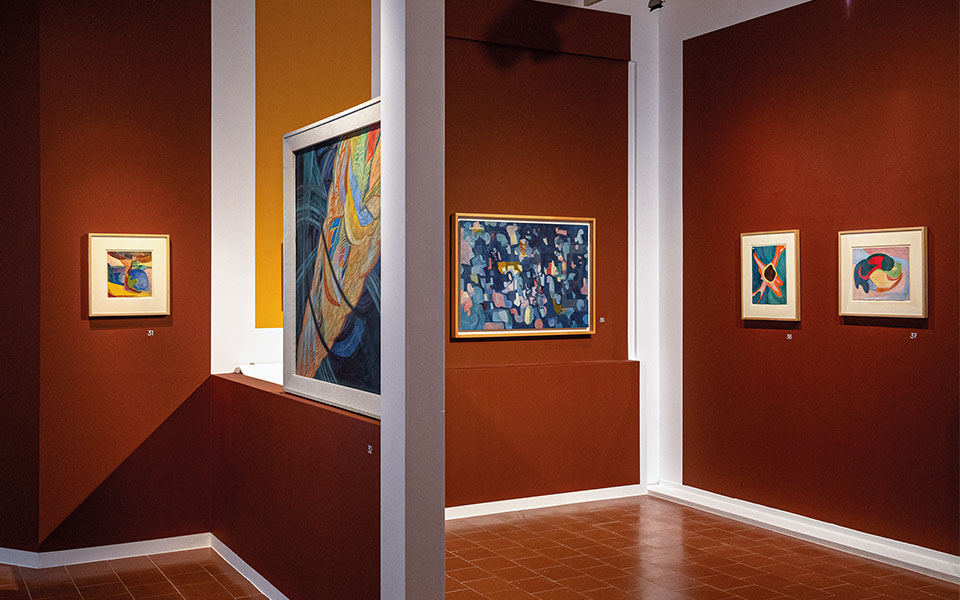
© Konstantinos Tsakalidis
ANDY WARHOL’S ALEXANDER THE GREAT
At the Museum of Contemporary Art, one of the most memorable works currently on display is “The Little Refugee” (2017), a “procession” of 125 porcelain figurines of children by Armenian artist Aikaterini Gegisian, who wishes to highlight the migrant and refugee crisis in Europe. This particular work, along with those of 44 Greek artists created during the pandemic, appears in the temporary exhibition “Public Domain: Donations & Purchases.” Nevertheless, there is no doubt that the Iolas collection continues to be the museum᾽s star attraction, and what greets me as I enter are “Adam”and “Eve,” two colorful papier-mâché creations by French artist Niki de Saint-Phalle. As I observe the skillfully directed dialogue between them, I raise my eyes and am captivated by “Ftera”(“Wings,” 1970) by the Greek artist Pavlos (1930-2019). Fashioned from poster paper and plexiglass, these wings are spread above the staircase that connects the basement with the ground floor and first floor. I continue toward the most famous exhibit item in the collection, Andy Warhol᾽s screen print of Alexander the Great. This 1981 work was commissioned by Iolas to coincide with the “Search for Alexander” exhibition of ancient art, then held at the National Gallery of Art in Washington, DC.
The varied collection includes many more notable works by Greek and international artists, such as the installation “Palindrome IV” by Nikos Zouboulis and Titsa Grekou, in which light sensors react to visitors᾽ movements and produce different sounds; the bronze sculptures by Italian sculptor Novello Finotti; and “Airplane” (1982), by Alexis Akrithakis, made of pieces of wood and neon lights and depicting an airplane flying in the night sky, above a rough sea. This work is on display in both its original version and a miniature replica, which visually impaired visitors can touch and feel while listening to an audio description. In 2020, the museum – together with the Thessaloniki branch of the Center for Education & Rehabilitation for the Blind – implemented the program “Mind᾽s Eye” to facilitate the access of individuals with visual impairment.
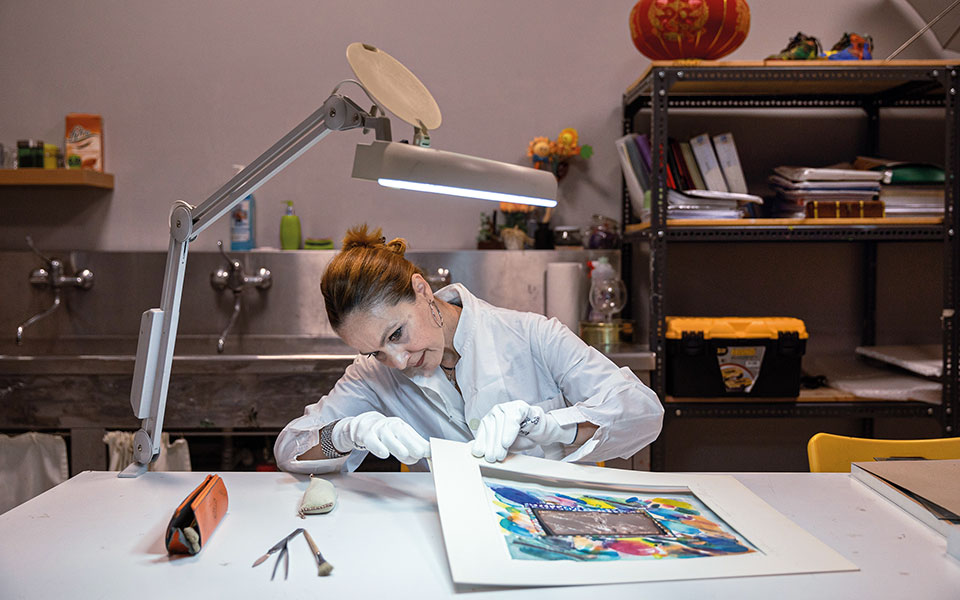
© Konstantinos Tsakalidis
THE RUSSIAN AVANT-GARDE
Archaeologist Olga Fota is the head conservator of the MOMus collections; one of her main tasks is ensuring all artworks are displayed under the right conditions to prevent any damage. She began her career over two decades ago at the Thessaloniki State Museum of Contemporary Art, now known as MOMus-Museum of Modern Art-Costakis Collection, and is, therefore, the ideal person to introduce us to the most extensive collection of Russian avant-garde in the world, which boasts approximately 1,300 works as well as thousands of rare documents, including the personal diaries of many artists, all purchased by the Greek state in 2000. “Any cultural organization in the world wishing to display works of the Russian avant-garde will, at some point, approach the Museum of Modern Art. I᾽ve traveled everywhere with the Costakis collection, most recently to the Sakip Sabanci Museum in Istanbul in 2018, where we exhibited more than 400 works,” Olga says in front of a painting she is preparing to restore in her laboratory.
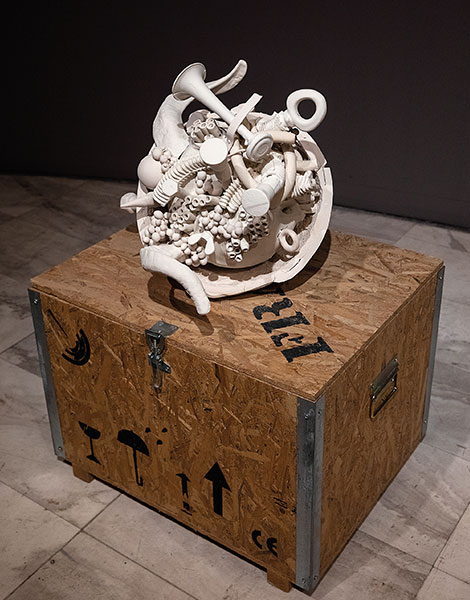
© Konstantinos Tsakalidis
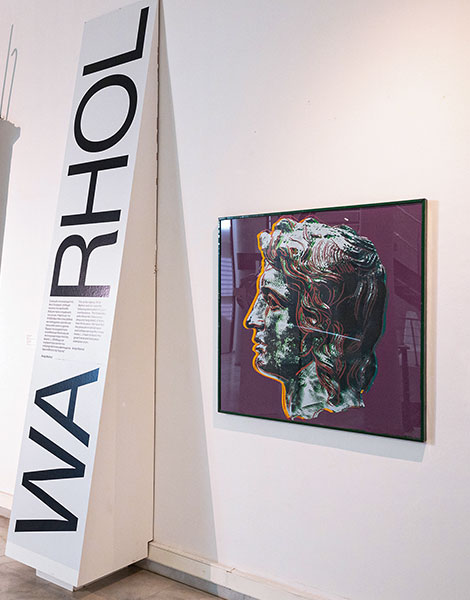
© Konstantinos Tsakalidis
Born in Moscow in 1913, George Costakis worked as a driver at the Greek embassy until 1940. When the embassy closed due to the war, he took up work as head of personnel at the Canadian embassy, in which capacity he would often accompany visiting diplomats to antique shops and art galleries. Although he had no formal art education, he was blessed with a rare talent for recognizing works of value. In 1946, as avant-garde art was being banned by the Stalinist regime, his attention was drawn to a painting by Olga Rozanova. This “love at first sight” prompted him to look further into the artists who had been active in Russia in the first decades of the 20th century and were responsible for what would come to be known among art historians as the Russian avant-garde. Gradually, by asking friends, approaching relatives of the artists, and traveling all over Russia, Costakis began collecting works which had often literally been hidden away and that were largely scorned by others. Indeed, among art collector circles in Moscow, he was referred to as “the crazy Greek who collects worthless rubbish.”
The Costakis collection is of global cultural value. “It is so comprehensive that it allows us … to shed light on all aspects and periods of the Russian avant-garde,” explains art historian Angeliki Charistou, chief curator, who first joined the museum as a student. For about two hours, Charistou shows us around the museum’s three floors in the northwest wing of the Lazarist Monastery, a monastic complex built in 1886 which, from time to time, was used for different purposes, such as in 1917 when it provided shelter for people made homeless by the Great Thessaloniki Fire that destroyed two-thirds of the city.
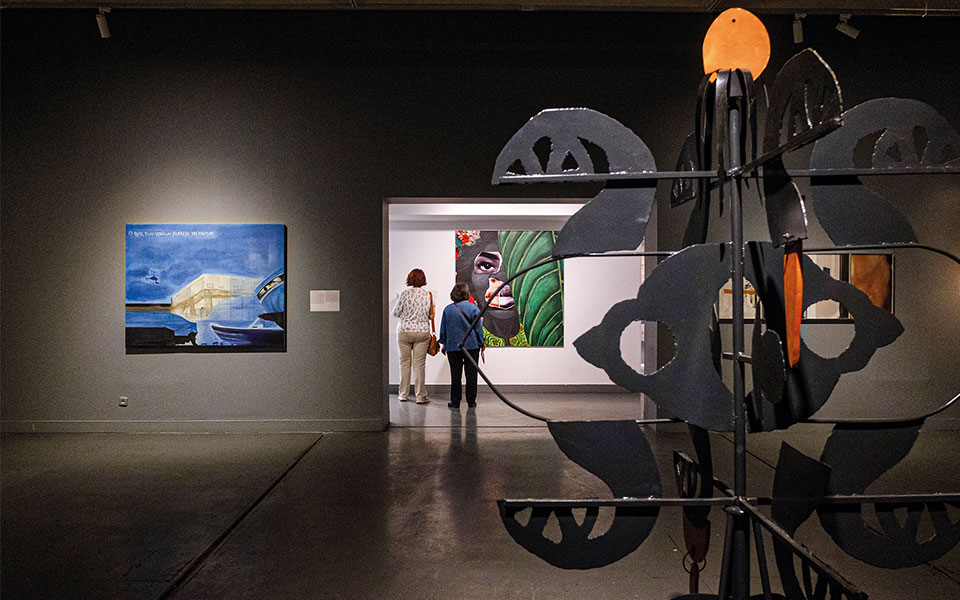
© Konstantinos Tsakalidis
THE THEREMIN
Our tour begins in the three rooms on the ground floor; each room introduces a different period of this artistic movement. On display in the first room are works of the early period (1907-1914) which were influenced by European modernism, such as “Still life with a jug” by Lyubov Popova, while in the second are works of non-objective art and suprematism (1915), represented primarily by Kazimir Malevich with his “Black Square.” The term “suprematism” derives from the Latin word “supremus” and refers to the dominance of color and form as opposed to figurative painting – a break with the academic and artistic tradition of the past, aiming to give birth to a new art for the future, in contrast with the Socialist realism of the early 1930s. In the third room, not only is the shift towards constructivism quite clear, but so is the change in the role that art should play. Henceforth, art was to be wholly utilitarian and serve citizens᾽ daily lives. On the first floor, passing through the interior archways of the historic building, we are shown around the exhibition “Organic Art: The Avant-Garde in Petrograd,” which runs until the end of May 2023 and focuses primarily on the artistic movement that sprang up in Saint Petersburg in the 1920s. The foremost exponent of this was painter and composer Mikhail Matyushin. What strikes me immediately is the harmony created in the space by the red, blue, and yellow on the walls.
“The use of colors helps the display of the works. The interior design was undertaken by architects Kirill Asse and Nadezhda Korbut, who work with the biggest museums in Russia,” says Charistou as she guides us to the second floor, to see what initially appears to be a strange piece of wooden furniture with two metal antennas. In fact, it is the theremin, one of the first electronic musical instruments dating to 1920, and the only one you could play without physical contact. As I move my arms, sounds are produced by the electromagnetic field!
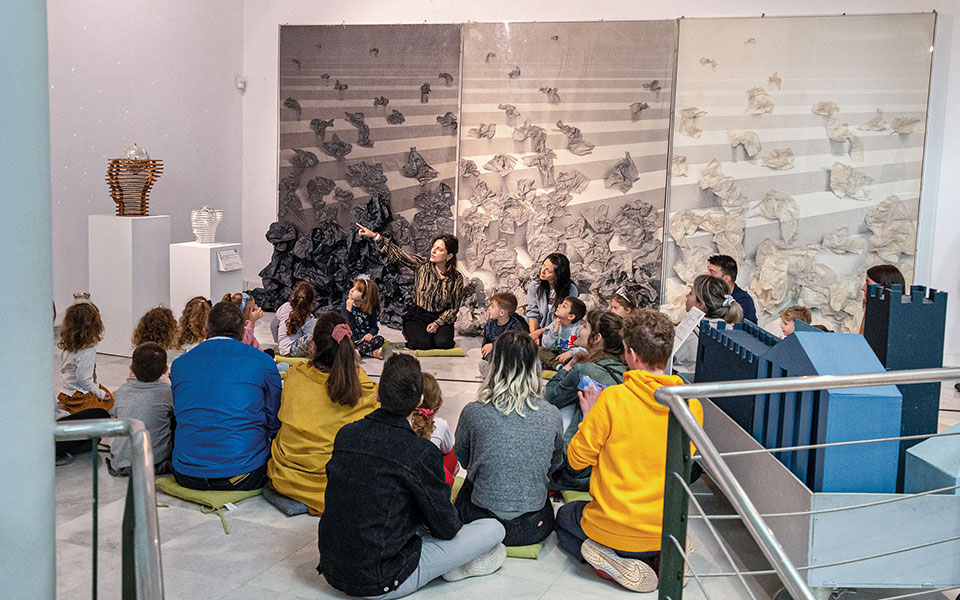
© Konstantinos Tsakalidis
A REFLECTION OF GREECE
The third source of pride for MOMus, apart from the marvelous Iolas and Costakis collections, is the archive of Swiss photographer Fred Boissonnas, which belongs to the MOMus – Thessaloniki Museum of Photography. This body of work comprises some 18,000 items, of which 5,000 are negatives. “The collection is significant because Fred Boissonnas, who maintained several studios, from Marseilles to Saint Petersburg, and who traveled to Greece frequently between 1903 and 1930, created a veritable mural of life in the early 20th century. No photographer before him had documented to such an extent the Greek landscapes and their people, linking the culture of the past through ancient monuments with the popular culture of the countryside and city life,” explains Hercules Papaioannou, the museum’s curator. “Of major importance, too, are the archives of Yiannis Stylianou, Dimitris Letsios, and Socrates Iordanidis, which capture Greece from the post-war period to the regime change in the mid-1970s.”
It᾽s a a sunny November day as I join the line outside the MOMus – Thessaloniki Museum of Photography, a two-story industrial building. A large group from Israel is waiting to see the exhibition “Fred Boissonnas and the Mediterranean,” which will run until February 2023. The exhibition, first presented at the Museum of Modern and Contemporary Art in Geneva, looks at how Boissonnas evolved as a photographer. It᾽s a photographic journey that begins in the Alps and ends in the Sinai Desert, but the main focus is the Mediterranean basin. Indeed, in one section of the exhibition, titled “Odyssey: In the footsteps of Odysseus,” one can clearly discern Boissonnas’ striving to create a photographic monument to the glory of Homer as the photographer wandered the Mediterranean shores, visiting places that may have inspired the legendary poet to compose the Odyssey.
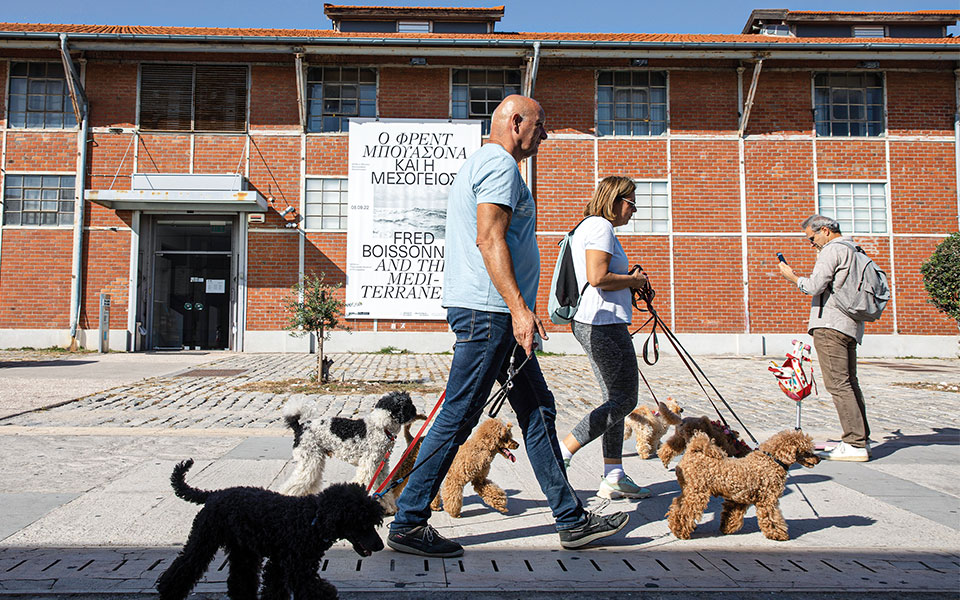
© Konstantinos Tsakalidis
ART HEALS
As I leave the museum, I notice a flurry of activity outside the Experimental Center for the Arts. Employees are bringing in material for an exhibition in honor of the film director Theo Angelopoulos, a show scheduled to open during the 63rd Thessaloniki International Film Festival. The center often hosts events to promote public discourse on contemporary art. “We want to stimulate public debate by highlighting issues that concern the future by organizing, for example, exhibitions focused on potential threats to humanity,” says the new Chairman of the Management Board of MOMus and Head of the UNESCO Chair in Futures Studies, Epaminondas Christophilopoulos. As we talk, the sun᾽s rays shine brightly on the text installation by Vassilis Psarras titled “Curate Our Traumas,” which graces the front of the building. A very astute stance, I decide. We should indeed be turning to art to heal our traumas.

